Matthew H Fish
Lead Service Attendant
- Joined
- May 28, 2019
- Messages
- 499
Hello All!
This Monday, I took an Amtrak trip from Eureka, California to Vancouver, Washington. This was a trip for practical purposes, although of course, I did get to see some great scenery! As some of you might know, but most of you don't, Eureka, California is a small town on the North California coast, and accessing it by any type of transit is difficult.
To go north from Eureka, I first had to go south. About 300 miles south, to Martinez, California (East Bay), and then get the Coast Starlight going north. At 10 AM, I boarded an Amtrak thruway bus outside the Eureka Denny's. The stop was just the normal Eureka city bus stop, and it was only when a few other people showed up that I knew I was in the right place. I got on the bus with little fanfare (they didn't check my ticket, just asked my name), and then started heading south. I was pretty tired, so I dozed off a little, but since it was a six or seven hour bus ride to Martinez, I had plenty of time to see 101. The bus had maybe a dozen people on it, maybe more as we got more towards Santa Rosa. The bus driver was very nice and friendly. Unlike Greyhound bus riders, who are sure to tell you that you are on your own when you get off at a rest stop, he took rolecall to make sure we were all there. There was, of course, some interesting terrain to see along the way. There was a lot of traffic jams in the Marin and Solano County areas, but we still got to Martinez an hour early.
Martinez was the low point of the trip. There was a six hour wait between getting in, and the Coast Starlight leaving. Which, it would turn out, would be extended by an hour because the Coast Starlight was late. Martinez was nice enough, there is a nice harbor park next to the station. But I was pretty tired, and had my luggage, so I didn't really want to walk around town. Outside the station, a woman asked me if I knew where I could find crystal meth. So, I also didn't feel like spending a lot of time in the environs of the station. The station staff weren't also particularly helpful, and the station didn't have wireless. I think in this day and age, internet access should be a natural thing for travellers. It costs virtually nothing and is important when we are travelling. But I would be out of signal until Portland.
Once the train boarded, around midnight, the rest of the trip was clear sailing. There was a tag for the seat next to mine, but there was no one sleeping there, so I moved over to the window seat, spread out, and went to sleep, waking up the next day sometime around 7 AM. around Mount Shasta. I got pictures of Shasta and Lassen. Two things happened that morning: the toilets went out of order in our car, and someone was smoking (probably electronically) cannabis. There was a man whose attire bragging about his marijuana consumption made him an obvious suspect, and I think that at one of the stops, the conductor had "a talk" about it with him, but I never saw exactly what happened.
The route over the Cascades in Oregon is beautiful, and the Willamette Valley is very nostalgic for me, because I grew up there. I met some people in the lounge and talked to my seat mate, so everything about that part of the trip was good. I got wireless in Portland so I could alert my host in Vancouver to my arrival and check my e-Mail. We were an hour late into Portland, but left early, so I got to Vancouver and hopped off.
That is the basic narrative of my trip...feel free to ask questions.
As to why we had to go south from Eureka, I will put that in a follow-up comment, because it is a story in itself.
Also, pictures:
(Somewhere south of Garberville)

(Ukiah Amtrak stop)
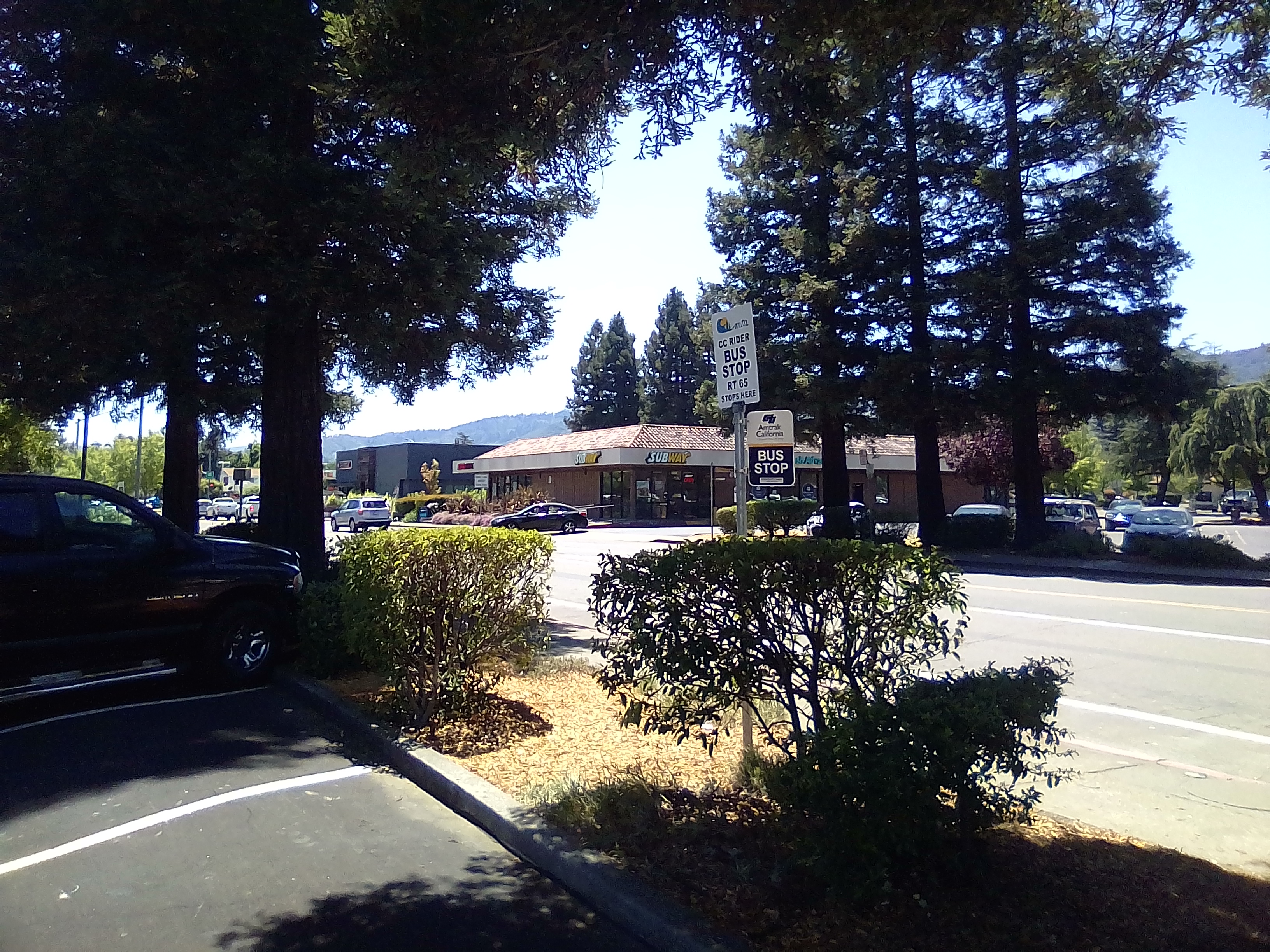
(Martinez Amtrak/Intermodal)

(Mount Shasta, I believe)
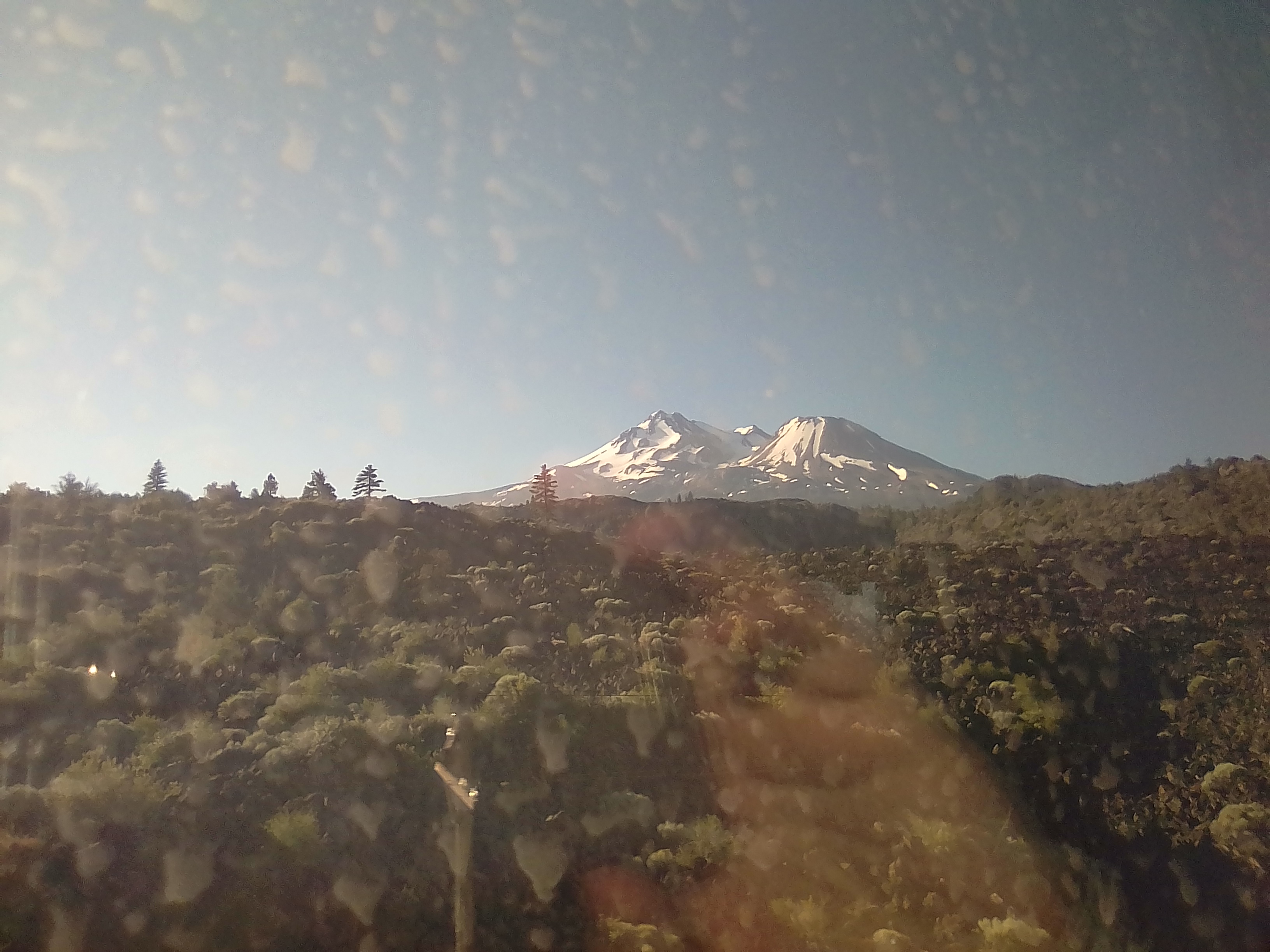
(Possibly Medicine Lake Volcano?)
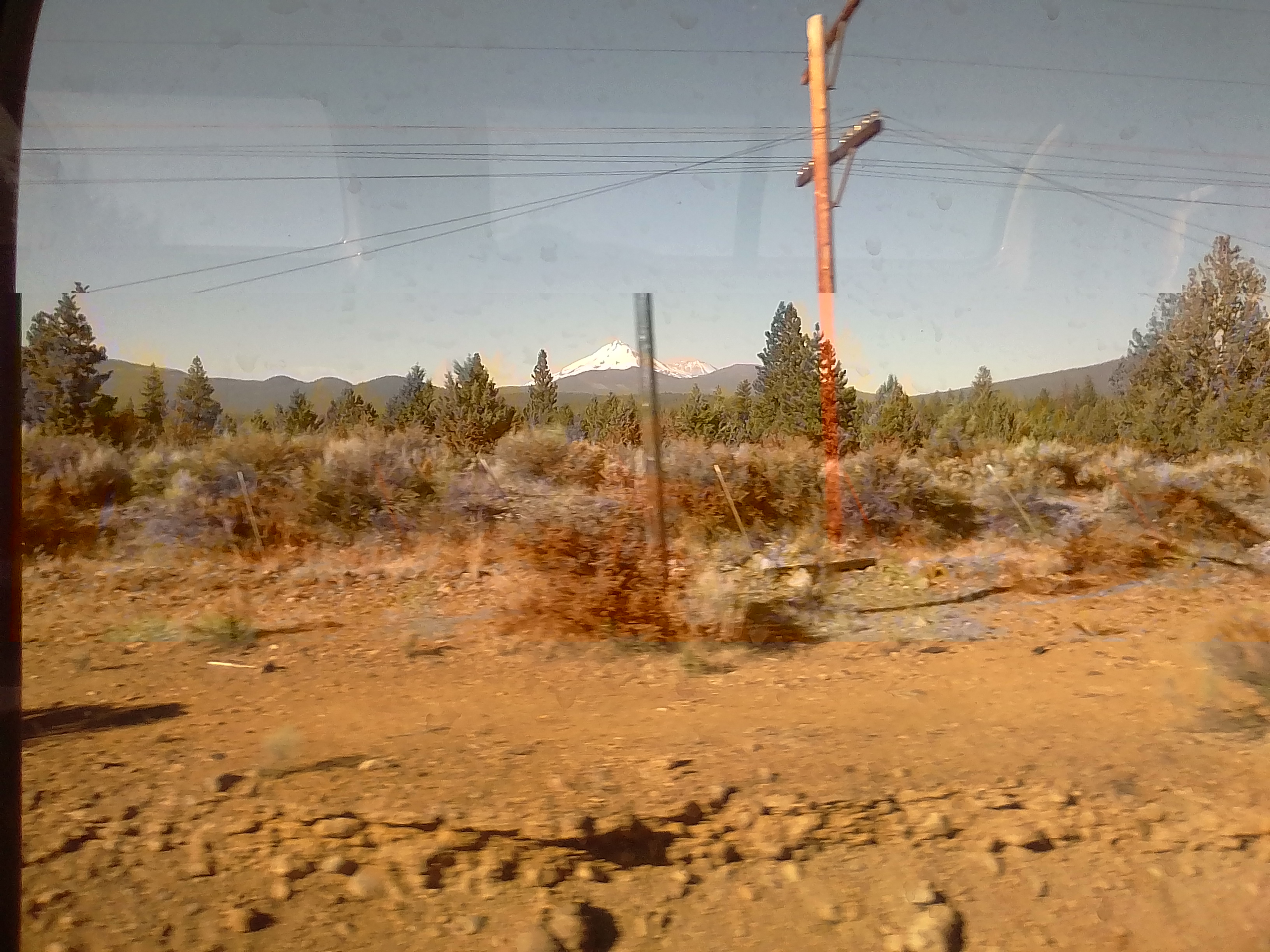
(Klamath Falls Amtrak
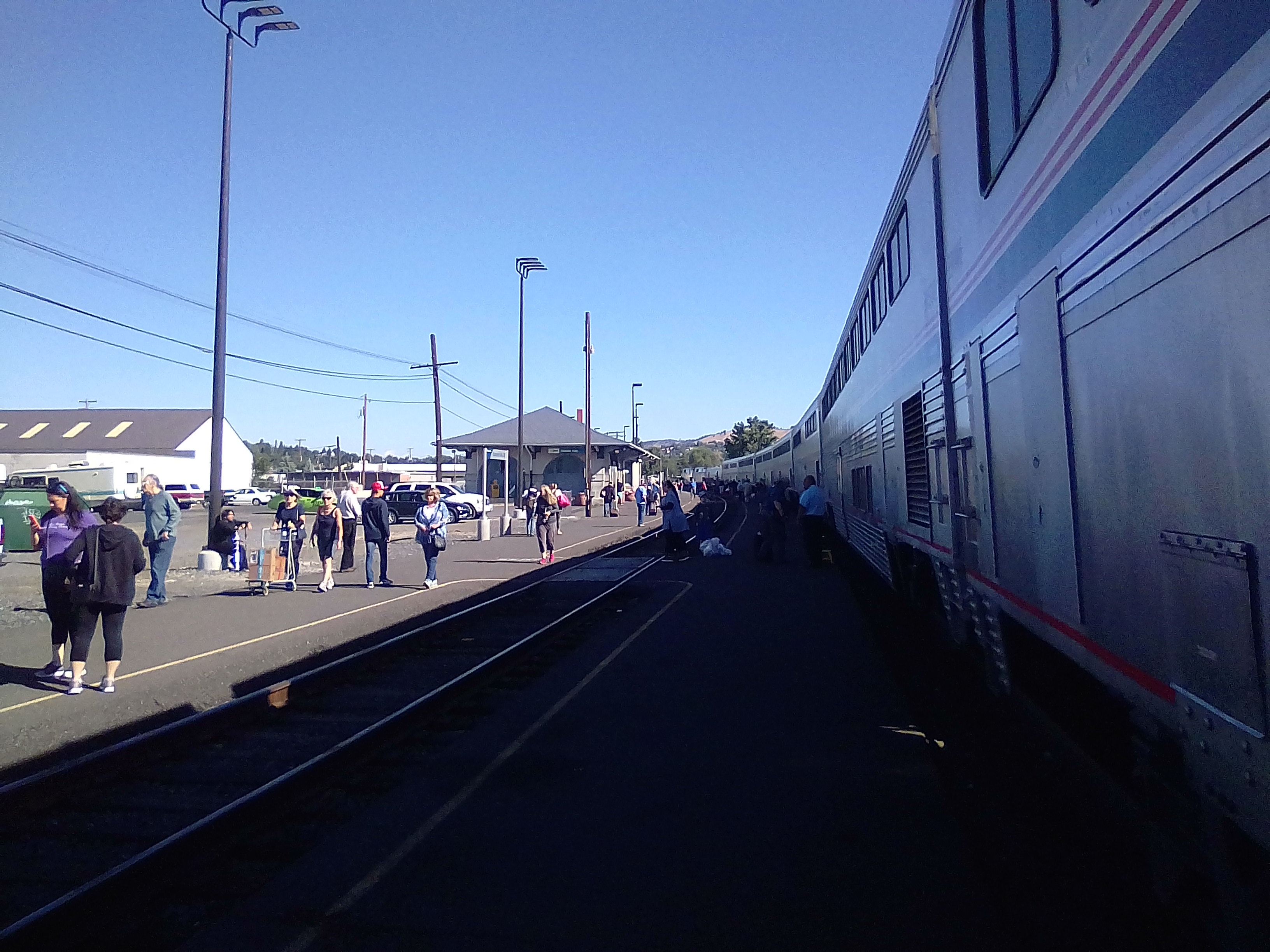
(Somewhere in the Cascades)
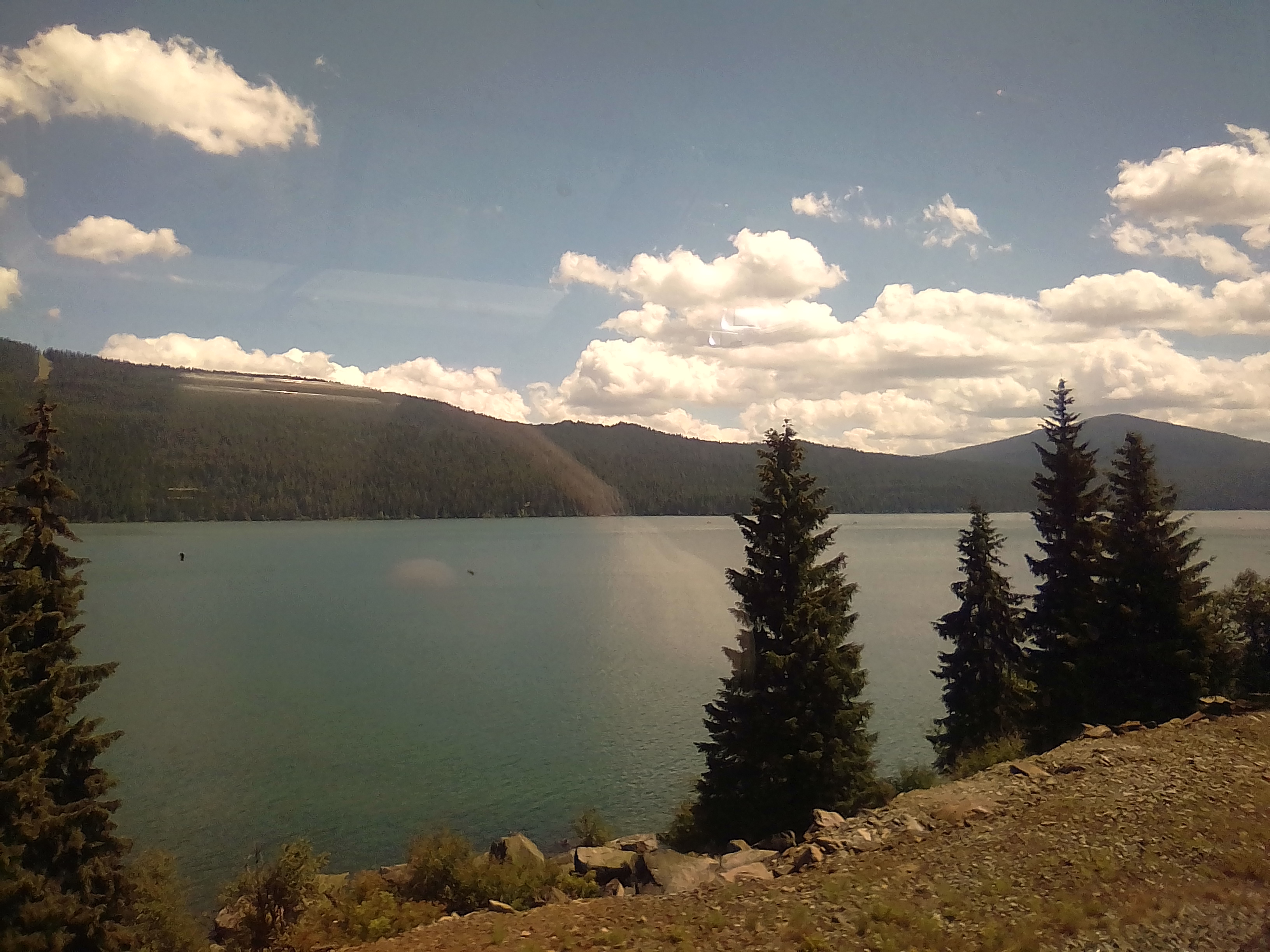
This Monday, I took an Amtrak trip from Eureka, California to Vancouver, Washington. This was a trip for practical purposes, although of course, I did get to see some great scenery! As some of you might know, but most of you don't, Eureka, California is a small town on the North California coast, and accessing it by any type of transit is difficult.
To go north from Eureka, I first had to go south. About 300 miles south, to Martinez, California (East Bay), and then get the Coast Starlight going north. At 10 AM, I boarded an Amtrak thruway bus outside the Eureka Denny's. The stop was just the normal Eureka city bus stop, and it was only when a few other people showed up that I knew I was in the right place. I got on the bus with little fanfare (they didn't check my ticket, just asked my name), and then started heading south. I was pretty tired, so I dozed off a little, but since it was a six or seven hour bus ride to Martinez, I had plenty of time to see 101. The bus had maybe a dozen people on it, maybe more as we got more towards Santa Rosa. The bus driver was very nice and friendly. Unlike Greyhound bus riders, who are sure to tell you that you are on your own when you get off at a rest stop, he took rolecall to make sure we were all there. There was, of course, some interesting terrain to see along the way. There was a lot of traffic jams in the Marin and Solano County areas, but we still got to Martinez an hour early.
Martinez was the low point of the trip. There was a six hour wait between getting in, and the Coast Starlight leaving. Which, it would turn out, would be extended by an hour because the Coast Starlight was late. Martinez was nice enough, there is a nice harbor park next to the station. But I was pretty tired, and had my luggage, so I didn't really want to walk around town. Outside the station, a woman asked me if I knew where I could find crystal meth. So, I also didn't feel like spending a lot of time in the environs of the station. The station staff weren't also particularly helpful, and the station didn't have wireless. I think in this day and age, internet access should be a natural thing for travellers. It costs virtually nothing and is important when we are travelling. But I would be out of signal until Portland.
Once the train boarded, around midnight, the rest of the trip was clear sailing. There was a tag for the seat next to mine, but there was no one sleeping there, so I moved over to the window seat, spread out, and went to sleep, waking up the next day sometime around 7 AM. around Mount Shasta. I got pictures of Shasta and Lassen. Two things happened that morning: the toilets went out of order in our car, and someone was smoking (probably electronically) cannabis. There was a man whose attire bragging about his marijuana consumption made him an obvious suspect, and I think that at one of the stops, the conductor had "a talk" about it with him, but I never saw exactly what happened.
The route over the Cascades in Oregon is beautiful, and the Willamette Valley is very nostalgic for me, because I grew up there. I met some people in the lounge and talked to my seat mate, so everything about that part of the trip was good. I got wireless in Portland so I could alert my host in Vancouver to my arrival and check my e-Mail. We were an hour late into Portland, but left early, so I got to Vancouver and hopped off.
That is the basic narrative of my trip...feel free to ask questions.
As to why we had to go south from Eureka, I will put that in a follow-up comment, because it is a story in itself.
Also, pictures:
(Somewhere south of Garberville)

(Ukiah Amtrak stop)

(Martinez Amtrak/Intermodal)

(Mount Shasta, I believe)

(Possibly Medicine Lake Volcano?)

(Klamath Falls Amtrak

(Somewhere in the Cascades)




